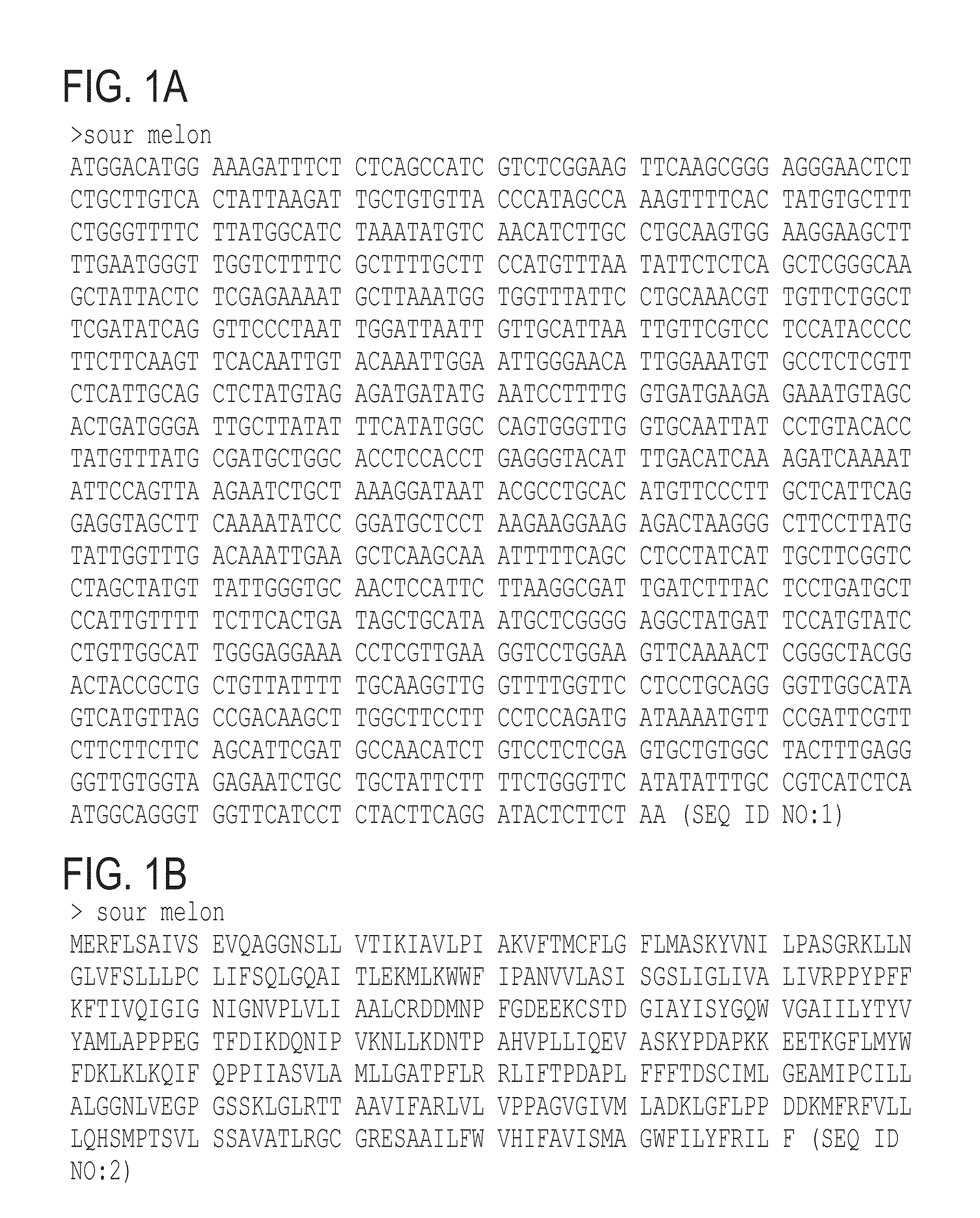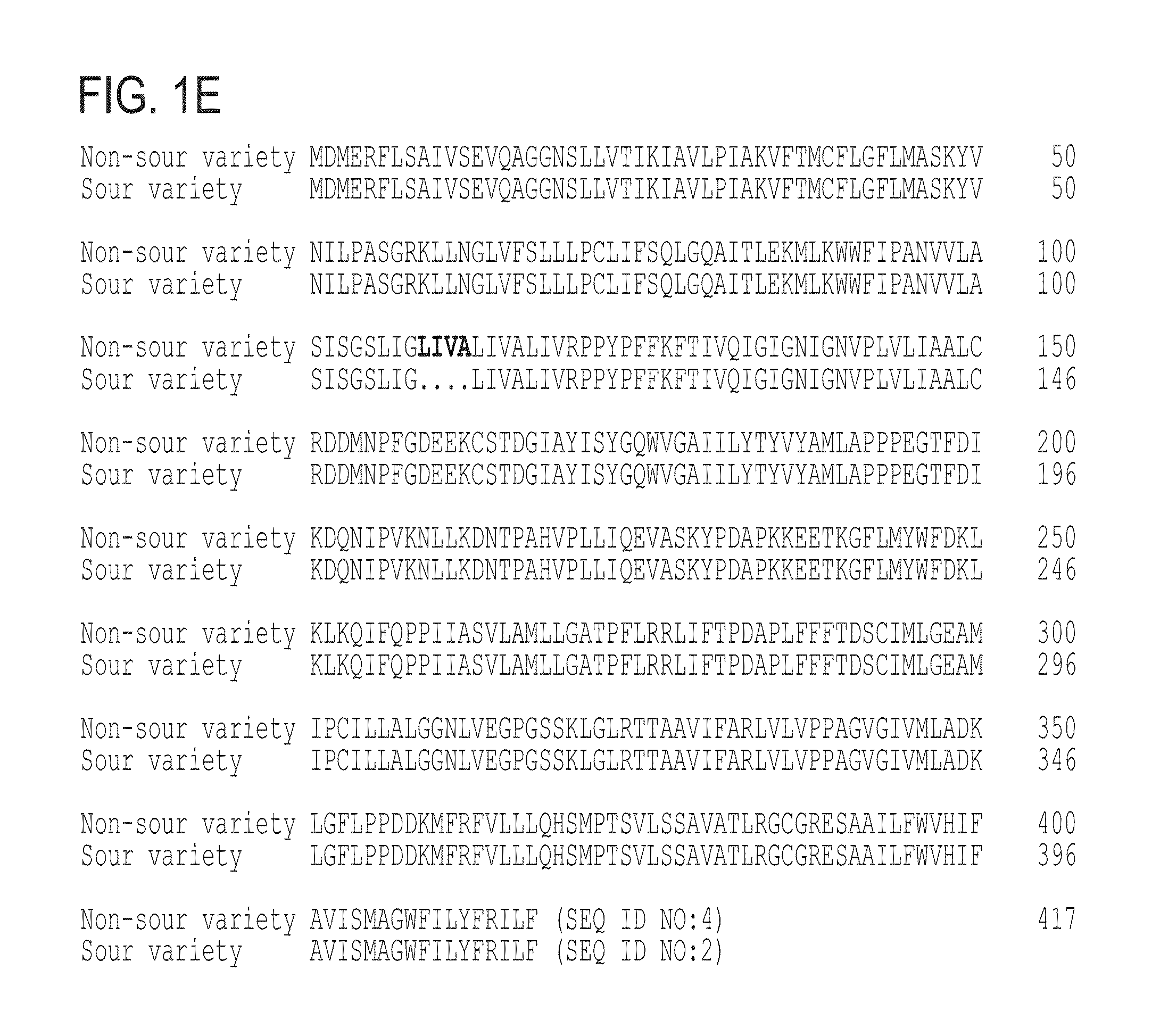Isolated polynucleotides and methods and plants using same for regulating plant acidity
a technology of isolated polynucleotides and methods, applied in the field of new isolated polynucleotides and polypeptides, can solve problems such as the toxicity of aluminum in plants
- Summary
- Abstract
- Description
- Claims
- Application Information
AI Technical Summary
Benefits of technology
Problems solved by technology
Method used
Image
Examples
examples
[0246]Reference is now made to the following examples, which together with the above descriptions illustrate some embodiments of the invention in a non limiting fashion.
[0247]Generally, the nomenclature used herein and the laboratory procedures utilized in the present invention include molecular, biochemical, microbiological and recombinant DNA techniques. Such techniques are thoroughly explained in the literature. See, for example, “Molecular Cloning: A laboratory Manual” Sambrook et al., (1989); “Current Protocols in Molecular Biology” Volumes I-III Ausubel, R. M., ed. (1994); Ausubel et al., “Current Protocols in Molecular Biology”, John Wiley and Sons, Baltimore, Md. (1989); Perbal, “A Practical Guide to Molecular Cloning”, John Wiley & Sons, New York (1988); Watson et al., “Recombinant DNA”, Scientific American Books, New York; Birren et al. (eds) “Genome Analysis: A Laboratory Manual Series”, Vols. 1-4, Cold Spring Harbor Laboratory Press, New York (1998); methodologies as set...
example i
Identification of the pH Gene Using Map-Based Cloning
[0248]The present inventors have mapped the gene responsible for controlling acidity (pH) in a plant using a fine mapping strategy (see e.g., Peters J. et al., 2003, Trends in Plant Science, 8:484-491). The novel gene was cloned using segregating populations of melon, which were derived from crosses between sour and non-sour genotypes. The populations were selected from a Random Introgression Line population derived from a cross of the non-sour variety Dulce and a sour genotype PI414723, as well as near-isogenic lines derived from a cross of the sour Faqqus variety and the non-sour Noy Yizre'el variety. The technique used to span the introgression was selected from BAC (bacterial artificial chromosome) walking and marker development and a combination of techniques thereof. By identifying polymorphisms and correlating them with the phenotype of fruit acidity, the introgression controlling fruit acidity was limited to ˜40 kb of geno...
example 2
Identification of a Duplication Mutation which Modifies the pH of Melon Fruits
[0257]Comparative sequencing of the novel pH gene from the acid and non-acid genotypes indicated that the non-acid sequence contained a 12 bp duplication, which encoded for a duplication of four amino acids in the derived protein.
[0258]Experimental Results
[0259]The present inventors have compared the sequence of the sour genotype with that of a sweet cultivated genotype (Dulce) and observed a duplication of four amino acids in part of the hydrophobic transmembrane span #3, as follows.
[0260]Identification of a Duplication Mutation Present in Non-Sour Melons—
[0261]Sequence alignment between the amino acid sequence encoded by the pH gene from sour (SEQ ID NO:2) and non-sour (SEQ ID NO:4) melon varieties revealed that the sequences are identical except for the presence of a four-amino acid duplication “LIVA” (SEQ ID NO:27) at amino acid positions 107-110 of SEQ ID NO:4, which appears in the non-sour melon vari...
PUM
| Property | Measurement | Unit |
|---|---|---|
| acidity | aaaaa | aaaaa |
| OD | aaaaa | aaaaa |
| OD 260/OD 280 | aaaaa | aaaaa |
Abstract
Description
Claims
Application Information
 Login to View More
Login to View More - R&D
- Intellectual Property
- Life Sciences
- Materials
- Tech Scout
- Unparalleled Data Quality
- Higher Quality Content
- 60% Fewer Hallucinations
Browse by: Latest US Patents, China's latest patents, Technical Efficacy Thesaurus, Application Domain, Technology Topic, Popular Technical Reports.
© 2025 PatSnap. All rights reserved.Legal|Privacy policy|Modern Slavery Act Transparency Statement|Sitemap|About US| Contact US: help@patsnap.com



